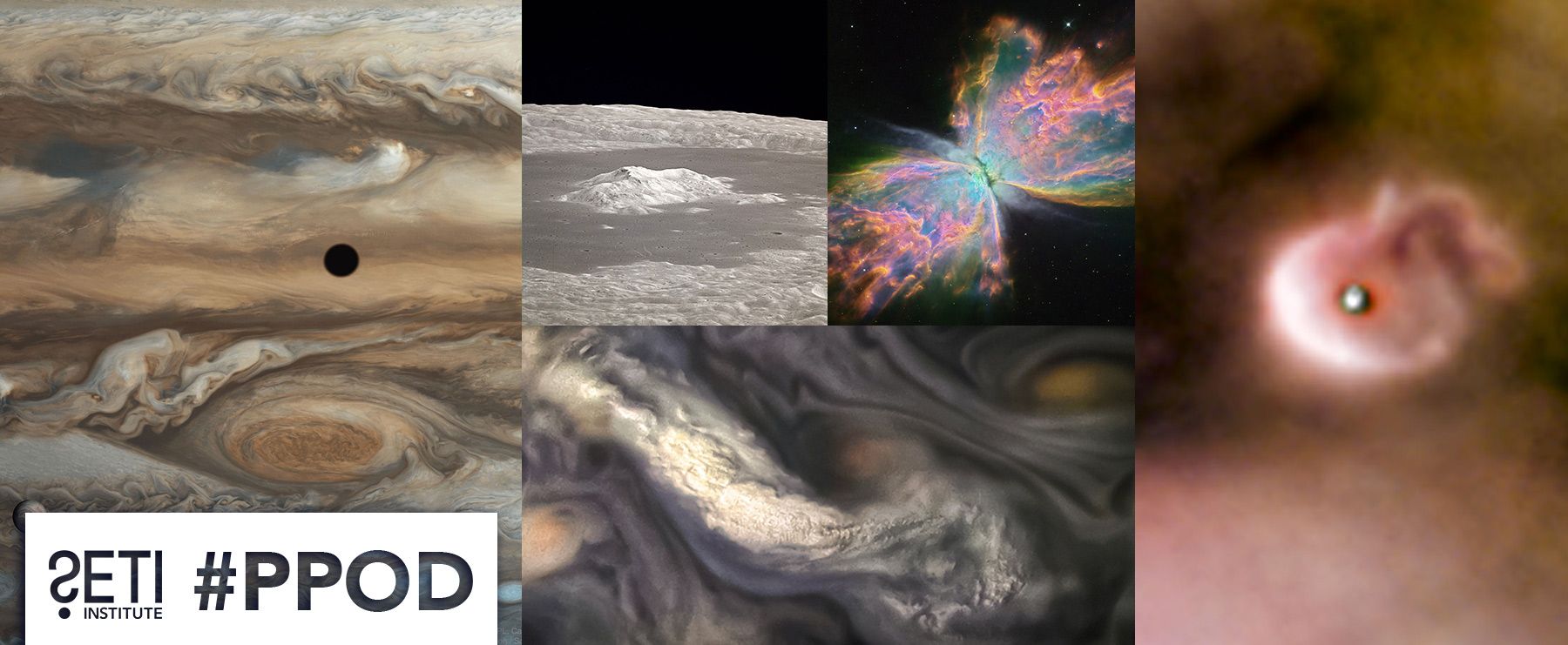
Planetary Picture of the Day
Week of August 1, 2022
Swirls, lights, colors and moonscapes … How do these images make you feel?
Monday, August 1, 2022
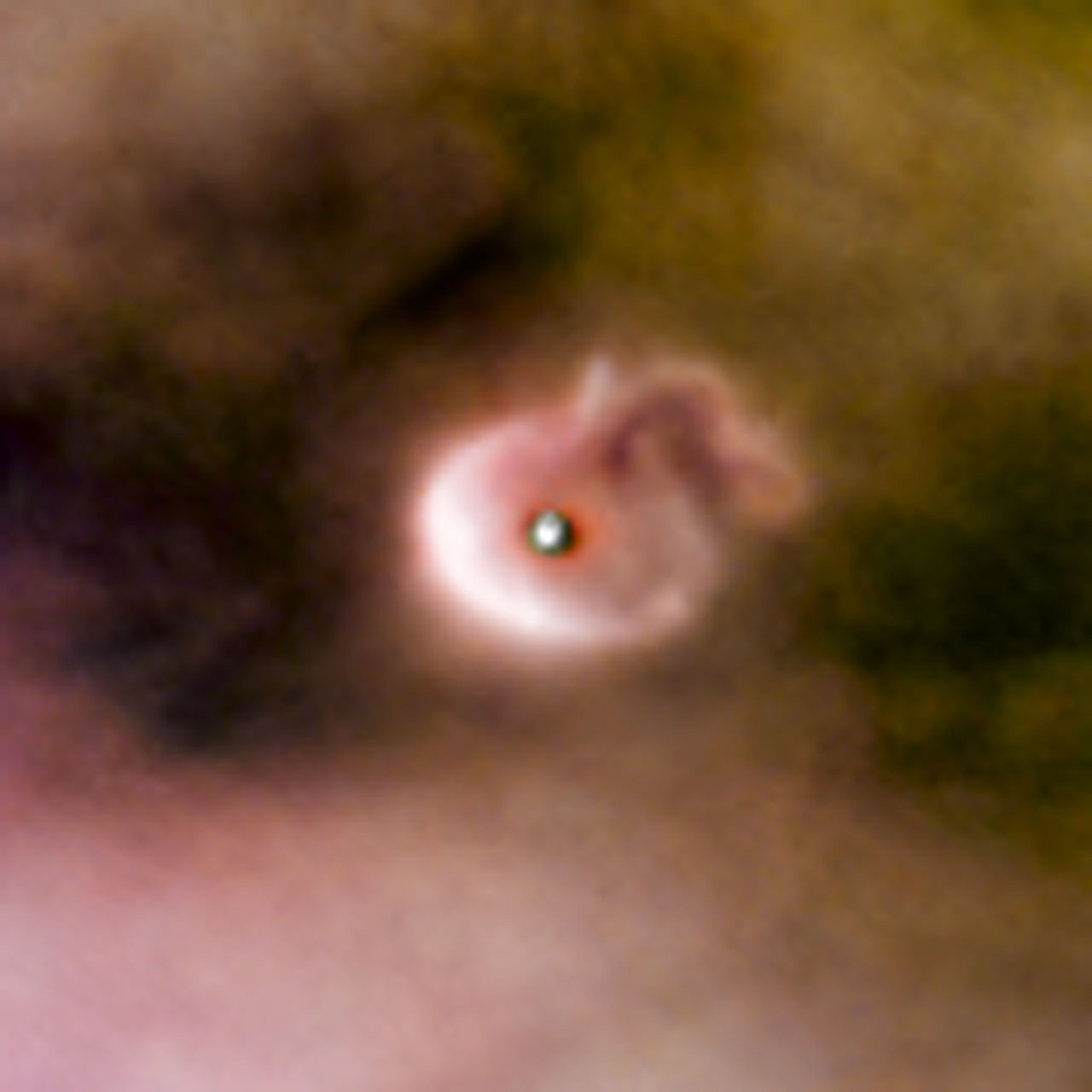
Credit: NASA/ESA and L. Ricci (ESO)
Born in Beauty
Proplyds are embryonic planetary systems. 206-446 is one of the 42 bright proplyds discovered in the Orion Nebula. It lies relatively close to the nebula’s brightest star, Theta 1 Orionis C. Resembling a head with a ponytail extending from it, this proplyd’s strange shape can be attributed to a jet of matter flowing away from its center.
You can download the high resolution image of 206-446 and read a lot more about these exoplanetary systems in the making here: https://buff.ly/3cWi51a
Tuesday, August 2, 2022
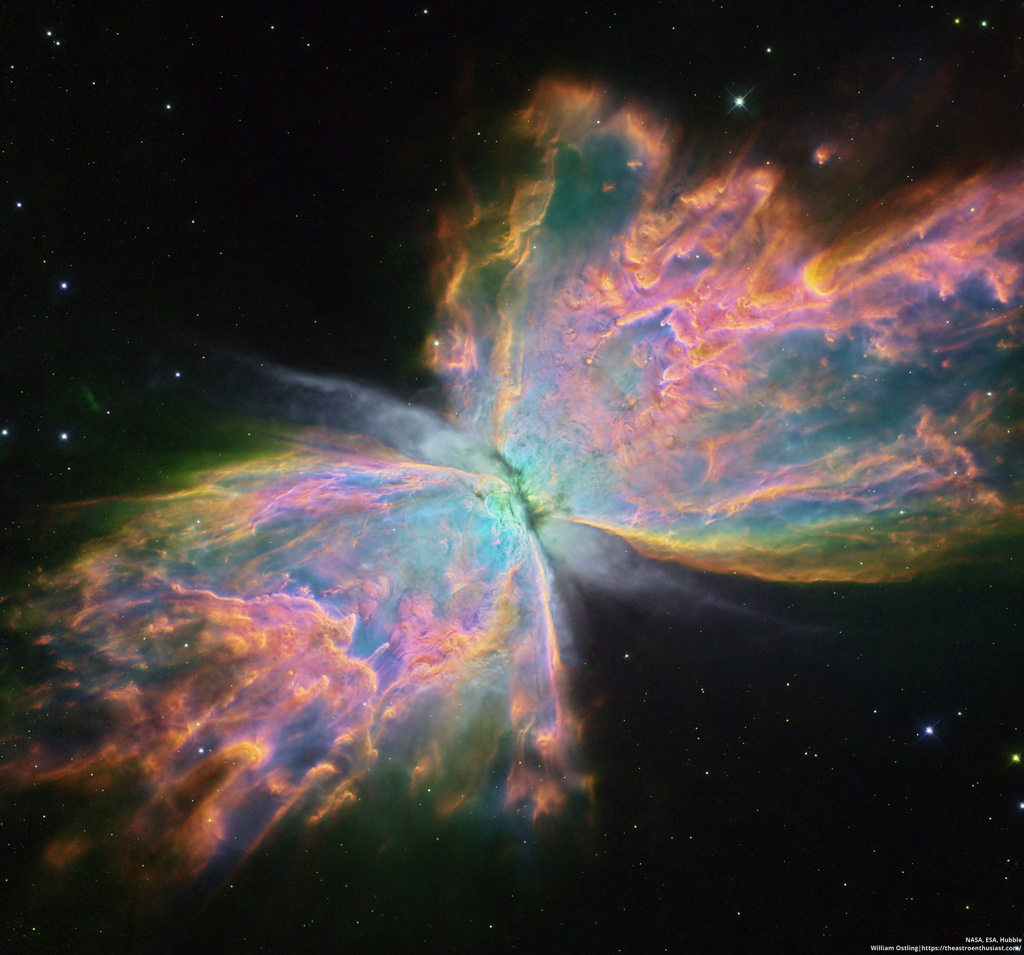
Credit: HST/NASA
Processing: William Ostling
Hypersonic Superheated Rainbow
The bright clusters and nebulae of planet Earth's night sky are often named for flowers or insects. Though its wingspan covers over 3 light-years, NGC 6302 or the Butterfly Nebula is no exception. With an estimated surface temperature of about 250,000 degrees C, the dying central star of this particular planetary nebula has become exceptionally hot, shining brightly in ultraviolet light but hidden from direct view by a dense torus of dust.
Wednesday, August 3, 2022
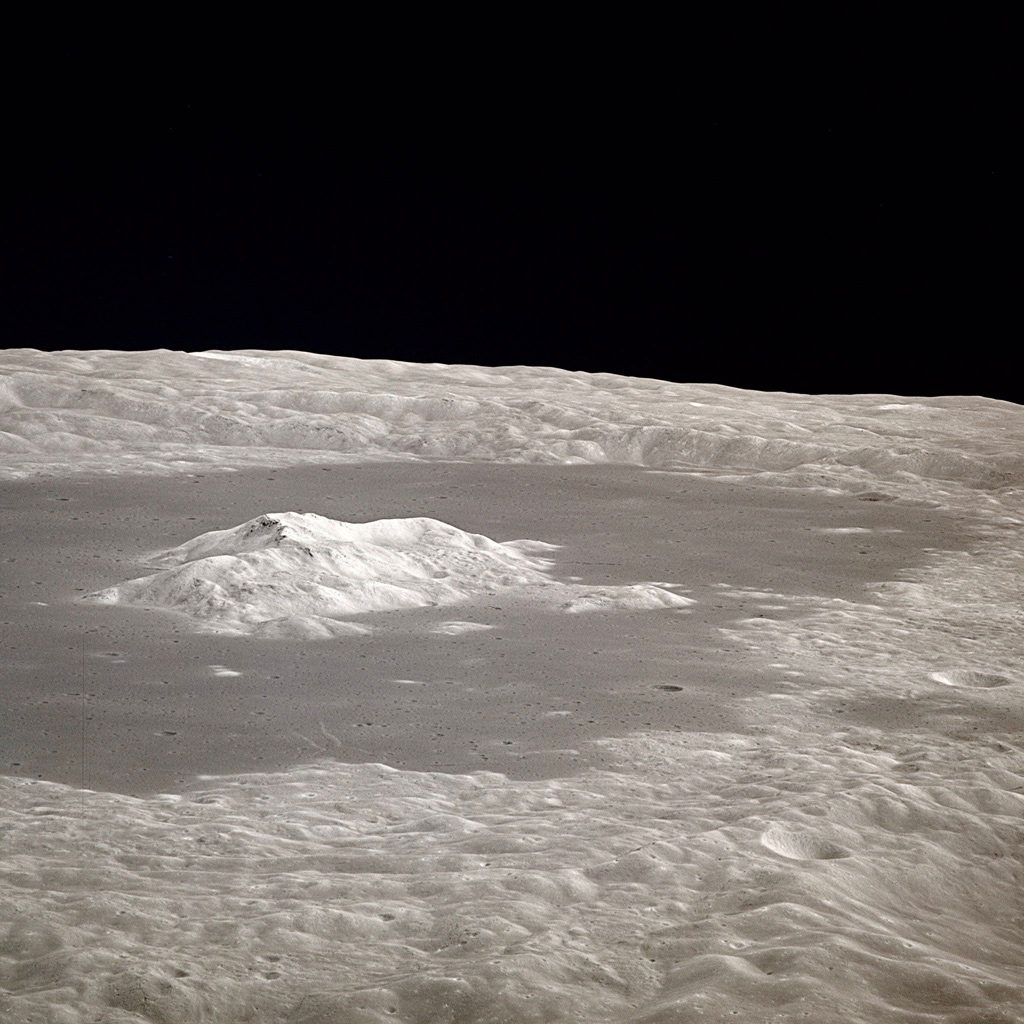
Credit: NASA
Far Side Lunar Crater
Central peak of the 178-km-diameter (111-miles) Tsiolkovsky crater on the Moon's far side, photographed on July 29, 1971 during Apollo 15 (NASA image # AS15-91-12383).
Thursday, August 4, 2022
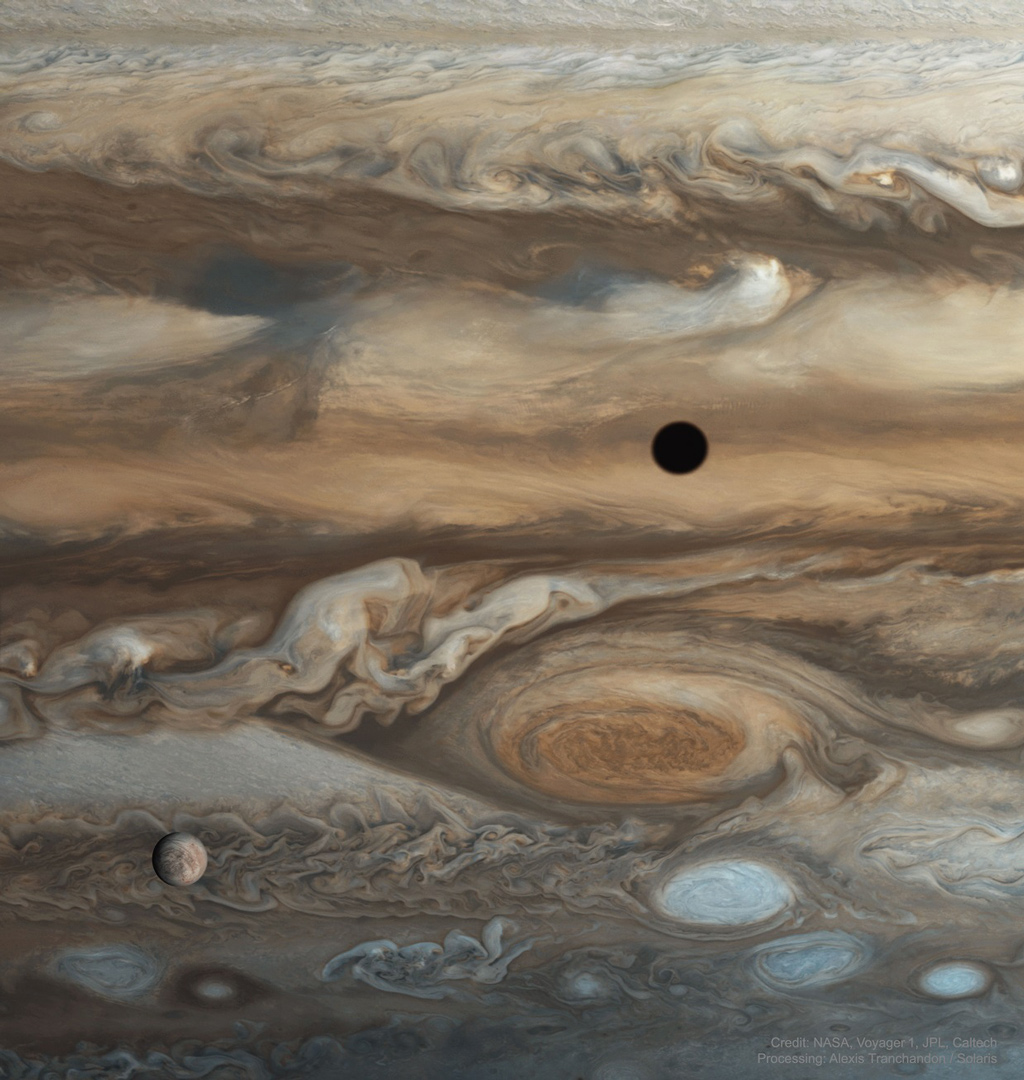
Credit: NASA, Voyager 1, JPL, Caltech
Processing & License: Alexis Tranchandon / Solaris
Europa and the Great Red Spot
On March 3 1979, Voyager 1 captured this view of Europa transiting over Jupiter's Great Red Spot. The image is composed of a 16-frames mosaic made of 41 individual images (16 oranges filters and 25 violets filters).
Friday, August 5, 2022
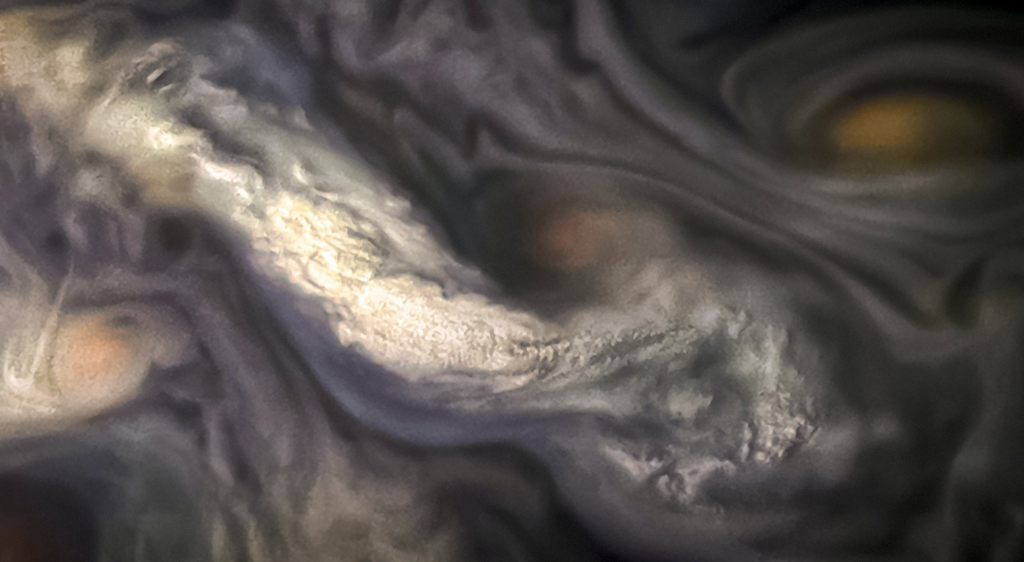
Credit: NASA/JPL-Caltech/SwRI/MSSS/Jason Major
High-Altitude Jovian Clouds
The North Temperate Belt is one of Jupiter’s many colorful, swirling cloud bands. Scientists have wondered for decades how deep these bands extend. Gravity measurements collected by Juno during its close flybys of the planet have now provided an answer. Juno discovered that these bands of flowing atmosphere actually penetrate deep into the planet, to a depth of about 1,900 miles (3,000 kilometers).
NASA’s Juno spacecraft took this color-enhanced image at 10:11 p.m. PDT on July 15, 2018 (1:11 a.m. EDT on July 16), as the spacecraft performed its 14th close flyby of Jupiter.





